The total sales volume of China's heavy-duty truck market in 2018 is 1.1479 million units, by increasing 3%, or 31,000 units more than a year earlier.
China's commercial vehicle market has surged in 2018, and as industry chroniclers and witnesses, CVzone forecast the industry trend of China in 2019 .
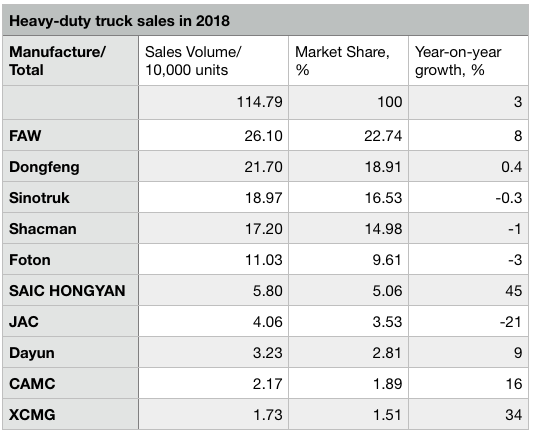
1. Super big groups will form
According to the statistics of the whole 2018, the total sales volume of domestic heavy trucks was 1.1479 million, of which the top five manufactures had a total sales volume of 950,000 units, accounting for more than 80% of the total.
Heavy truck is an industry with obvious scale effect. With the changes in industry structure and market environment, it is expected that the concentration will further increase. In 2018, Tan Xuguang became the leader of SINOTRUK, which caused great concern in the industry. It is speculated that if Weichai gradually equipped its gold power chain into SINOTRUK’s trucks in 2019, and with the positive momentum of SHACMAN, the scale advantage will be even more prominent. Domestic heavy-duty truck users are not loyal to the brand, and price is still the dominant factor affecting purchase behavior. Once the price advantage of SHACMAN and SINOTUCK products equipped with Weichai Power increased, it will not only impact the leading manufactures FAW and Dongfeng, but will also squeeze the living space of the lower ranked ones.
In fact, the European and American markets have proved this. It is expected that the global heavy truck market, including China, will start a new round of integration from 2019.
2. The worrying fate of tail manufactures and new brands
In addition to the top ten heavy-duty truck companies, there are also some companies whose annual sales has been under 10,000 vehicles for many years, as well as some new brands that have just entered. If these companies want to survive in the cracks and avoid being eliminated by the market, they must change the big and comprehensive strategy into simple but effective path.
Due to the lack of consideration of the cruelty of the market, many companies set great goals in terms of capacity and strategy when they entered this field. However, it turns out in the past 10 years that companies with no technologies and market experiences had a hard time affecting the status of the head manufactures.
For these companies, they must abandon the strategy of attacking the whole line, and should concentrate on seeking some regions or segments that the big group has no interest in, so as to form their own unique advantages in a certain field. Dayun and XCMG, which have entered the top ten now, have proved the effectiveness of this strategy.
3. Light trucks will fall into a new round of homogenization competition
The domestic light truck industry has not experienced major ups and downs in recent years. In terms of production and sales, the volume is basically around 1.6 million units. From the perspective of the industry structure, the overall ranking has changed little except for the emergence of SINOTRUK. The development ideas are different. Some pursue the scale, some value the profits, which makes the differentiation very obvious. However, since 2018, there has been a sign that, as the concentration of the industry rises, the scale is increasingly valued. No matter how good or bad, in every market segment, there are many participants who make light trucks. The differentiated features of products are becoming less and less obvious.
Due to the short development cycle of light trucks, the market response is relatively fast, a new product is quite easy to copy. Moreover, the light truck industry has been led by various regulations and policies. Manufactures are more concerned about short-term needs and lack long-term planning for brand and product strategies. In addition, most of the current light truck companies do not have the core technology of the power chain, and generally adopt socialization power chain which is sold to every OEM, which leads to more serious product homogenization.
4. The confrontation between imported trucks and domestic trucks before JV shares proportion releases
In the past years, due to the large price gap, it is difficult for imported trucks and domestic trucks to face a confrontation, and this situation may begin to change in 2019.
From the price point of view, the current domestic high-end heavy truck prices have moved up to the range of 400,000-500,000 RMB, and imported trucks have dropped to about 600,000 yuan with the influence of exchange rate and other factors, the two sides are gradually moving closer. From the perspective of customers, people who used imported trucks rarely buy domestic ones, and vice versa, but today, many customers have both. For the applications, the conquering markets for imported trucks such as pump trucks, firefighting trucks, long-haul trucks, domestic high-end trucks are gradually infiltrating.
By 2020, China will cancel the foreign-investment ratio limit for commercial vehicles. In 2019, before the release of the joint-venture shares proportion, several joint ventures, including Dongfeng and Volvo, Foton and Daimler, and Sinotruk and MAN are expected to evaluate the current operating status and product strategy. Once the foreign party is determined to hold a controlling stake, they will inevitably introduce more products and technologies into China's localized production. By then, the Chinese trucks, which are known for their high cost performance, will launch a real confrontation with European brands.
5. TCO becomes a new focus after new energy and automated drive
In 2018, pure electric and fuel cell technology became the hotspot s of the global truck industry. In China, the automated drive became a hotspot. But on the whole, the rise of these technologies is not the actual demand of the market now. The reasons maybe complicated, with capital power and policy guidance. In this case, these technologies still have a long way to go before they are truly commercialized. It is expected that they will enter the sedimentation period and incubation period in 2019, and TCO and the technologies behind it are most likely to become a new trend that can affect the customers’ profits.
TCO concept was originally an exotic product. However, it is expected that the acceptance rate of TCO in the Chinese market will be faster than expected, because with the popularity of various fleet management softwares, managers and owners can intuitively calculate the input-output ratio of a truck.
The adjustment of the transportation structure caused by the transfer from road to train will have a direct impact on the profit of the road freight industry. The improvement of the efficiency of the logistics industry will put forward higher requirements for uptime, and these will directly drive the demand for related technologies and products. For example, long drain, maintenance-free, and complete services will be promoted and popularized among large fleet users such as express.






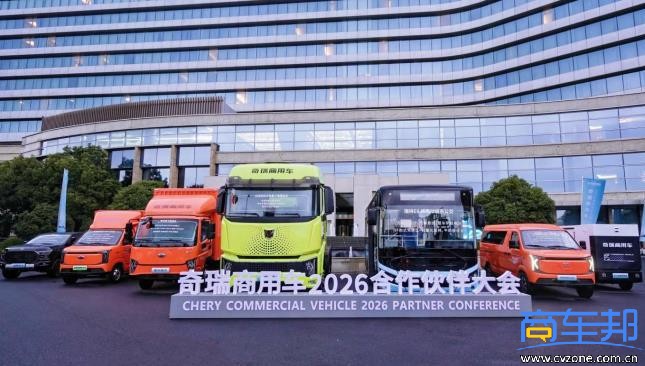
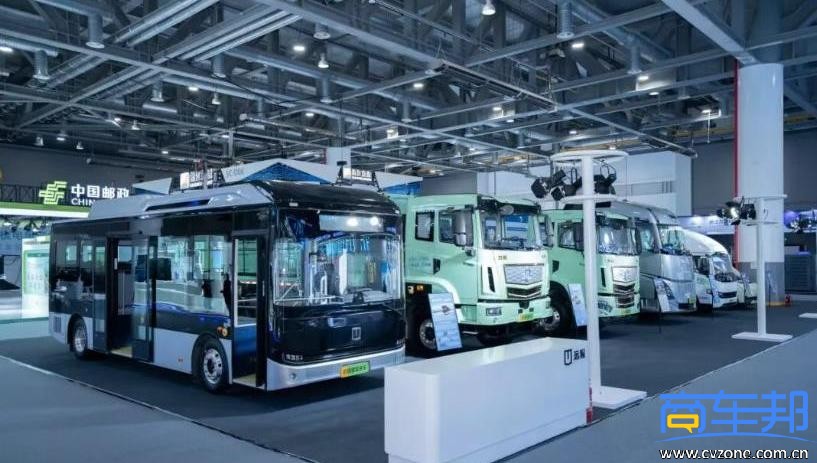
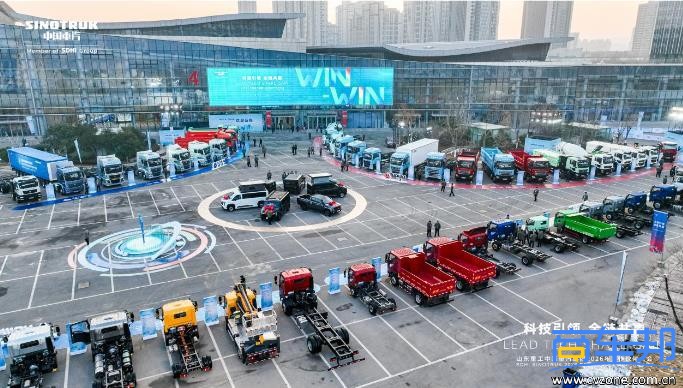
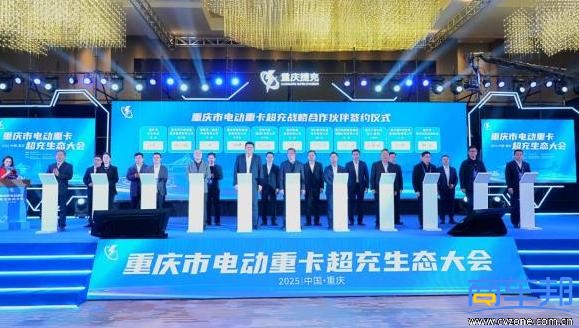
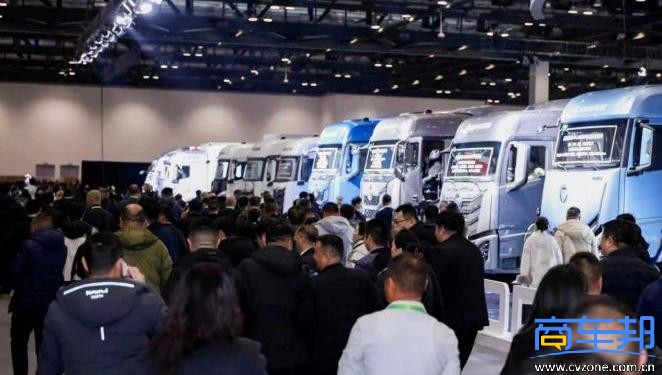



我要评论
登录 后可以评论